Diptera.info :: Identification queries :: Diptera (adults)
|
Psychoda albipennis?
|
|
| nielsyese |
Posted on 07-12-2010 19:38
|
|
Member Location: Yerseke, NL Posts: 2368 Joined: 13.02.09 |
Louis Boumans identified this Psychoda for me as a possible P. albipennis/P. parthenogenetica, but he couldn't rule out P. satchelli and P. zetterstedti. Can someone by means of this pictures of the subgenital plate rule out the last two species? Thanks in advance.
nielsyese attached the following image: 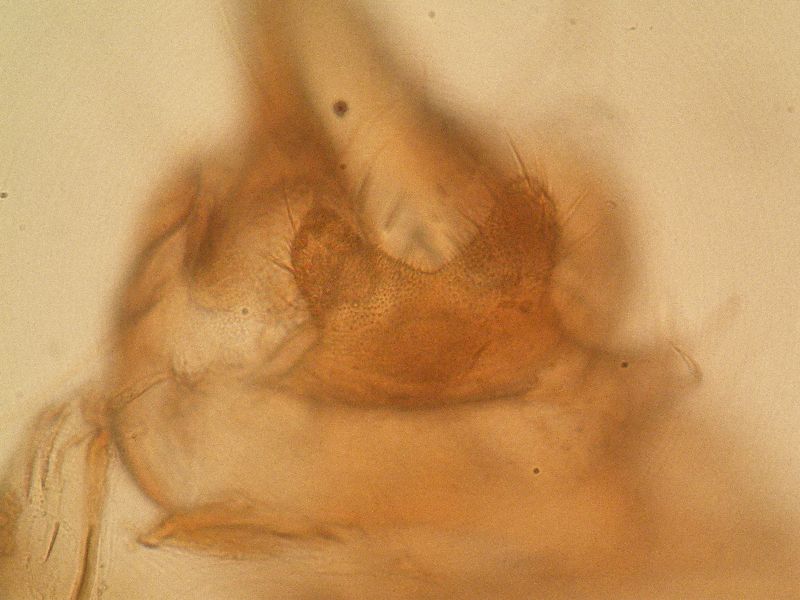 [116.04Kb] |
|
|
|
| nielsyese |
Posted on 07-12-2010 19:38
|
|
Member Location: Yerseke, NL Posts: 2368 Joined: 13.02.09 |
2nd
nielsyese attached the following image: 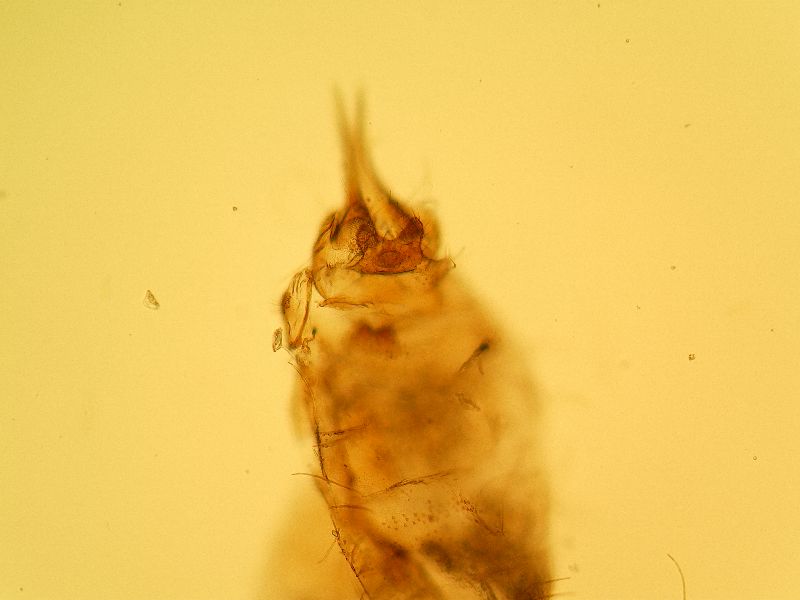 [88.27Kb] |
|
|
|
| nielsyese |
Posted on 07-12-2010 19:39
|
|
Member Location: Yerseke, NL Posts: 2368 Joined: 13.02.09 |
last
nielsyese attached the following image: 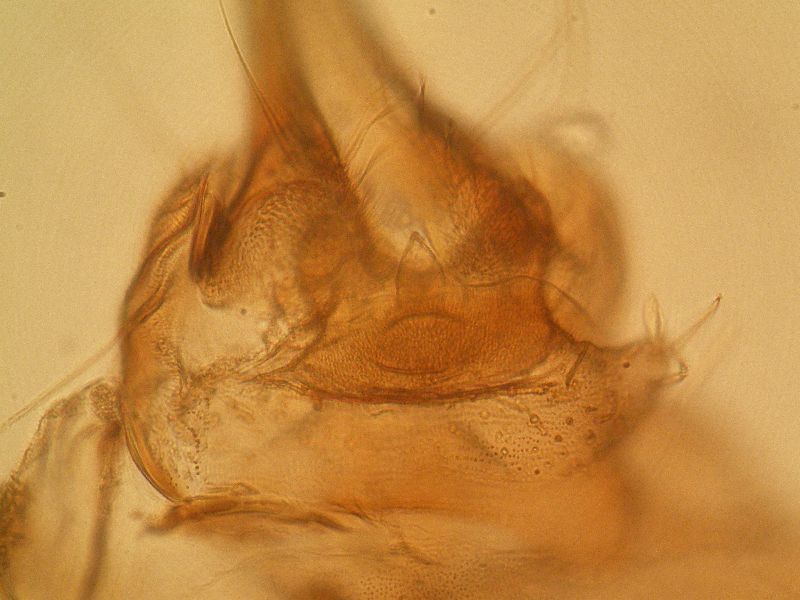 [118.31Kb] |
|
|
|
| Gunnar M Kvifte |
Posted on 08-12-2010 01:06
|
|
Member Location: Kassel, Germany Posts: 436 Joined: 18.08.09 |
All of the species you mention have been considered synonyms with Psychoda albipennis at some point. I do not agree with this; the albipennis complex seems to consists of at least two different species in Northern Europe based on what I have seen: P. albipennis and P. satchelli. P. zetterstedti may also be a good species; however I have never seen definite zetterstedti specimens in my Scandinavian collections. If P. albipennis has males at all they probably either look like zetterstedti or P. jezeki Withers, 1988 . I am myself not familiar with female genitalic characters of these species, having worked mostly on males. I do, however have the descriptions of them in my literature collection - I can look them up tomorrow afternoon when I get access to it. I am, however, afraid that it might be necessary to examine the spermathecae, which are not visible in these photographs. The easiest way of separating them under the taxonomy that recognises albipennis, satchelli and zetterstedti is by examination of the antennal tip. This, of course, requires that the antennae are intact; which is often not the case. If your specimen has it, a photograph of it would be useful. At the present time it is not clear which species in the albipennis complex are good species and which are not. I am currently pondering on whether DNA might be useful in resolving this; if anybody here have fresh material of Psychoda with 14-segmented antennae I would very much like to receive it. |
|
|
|
| Gunnar M Kvifte |
Posted on 09-12-2010 15:41
|
|
Member Location: Kassel, Germany Posts: 436 Joined: 18.08.09 |
After examination of the descriptions in Jezek (1983, 1990) I am inclined to call this one a P. satchelli - the subgenital plate is dark distally and its digit (the cone-shaped thing in the middle, visible on the bottom-most picture) is longer than its breadth at base. |
|
|
|
| nielsyese |
Posted on 09-12-2010 18:51
|
|
Member Location: Yerseke, NL Posts: 2368 Joined: 13.02.09 |
Thanks for clarifying the taxonomical mess and for supplying your identification with information your ID is based on. Greetings, Niels. |
|
|
|
| Louis Boumans |
Posted on 09-12-2010 22:49
|
|
Member Location: NO Oslo Posts: 269 Joined: 09.06.04 |
Hi Gunnar, Niels, and all, Nice to have you here! The fuzzy situation around Ps albipennis and similar (potential) species (severini, parthenogenetica, zetterstedti, satchelli) is disturbing me for some time. Perhaps with all forces joined here we can get somewhat more clarity in this issue. Hopefully Phil Withers can also join in and perhaps Bo Svensson is around? What I found so far: In the Netherlands I was able to discern two forms ~ species: 1) males and females looking like Ps. albipennis Zetterstedt, 1850, as figured in Tonnoir 1922. I's not clear to me how these would differ from Ps. satchelli Quate 1955, and figured by Quate and by Jezek 1990. These have a small knob between segment segm 13 and 14. (I'm inclined to think there are 15 segments with the penultimate reduced.) I call these Ps. albipennis. 2) females that look the same as the previous ones, but lack the knob between the 13th and 14th segment. These look like Ps. severini females as figured by Tonnoir 1922. Later a subspecies Ps severini parthenogenetica Tonnoir 1940 was defined. Various studies have shown the occurrence of a triploid parthenogenetic lineage, which would be this one. Tonnoir 1922 also depicts a severini male. I don't know if this sexual severini (or whatever it should be called) exists next to the parthenogetic lineage. I myself have never found males with such antennae. Alternatively the male depicted in Tonnoir belongs to a different species altogether. I provisionally refer to this for as Ps. parthenogenetica. In doing so I follow the opinion of R. Wagner he sent me in an email about a year ago. (However, it is inconsistent with the Dutch checklists by Wagner & Beuk 2002, which lists albipennis. satchelli and zetterstedti, but parthenogenetica as a synonym of the former.) As said, from Quate's description of satchelli I can't figure out the difference with albipennis males. Moreover, Jezek (1990) goes on to question the subtle difference Q points out. As for the satchelli females, Q 1955 simply states that they look 'çompletely different' but without giving a picture. From Jezek's (1990) re-description of satchelli and his following discussion, I am likewise unable to understand how it differs from albipennis Zetterstedt. Quite possibly this is due to my on limitations. (By the way, Jezek 1990: 75) says "Ps albipennis auct. = Logima zetterstedti Jezek 1983". If this is true, one wonders once more why both names are listed as valid in the Dutch checklist.) In sum: this is completely maddening. It would be nice if we could establish how many species of 'albipennis' look-alikes we distinguish, in Europe to start with. After that we can think about how they should be called. Please help! |
|
|
|
| Louis Boumans |
Posted on 09-12-2010 23:04
|
|
Member Location: NO Oslo Posts: 269 Joined: 09.06.04 |
PS: so this ould be 'my' parthenogenetica: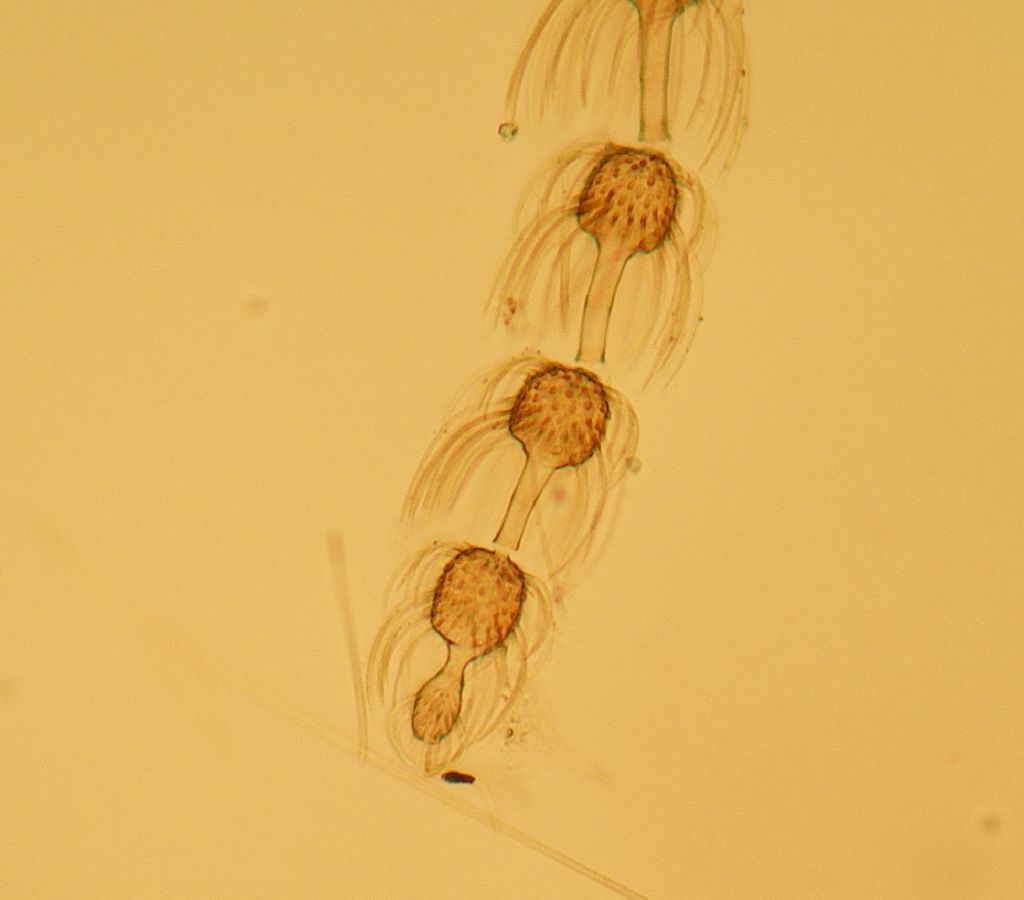 and here the medial digit is arguably shorter indeed, though this also deepens a lot on the angle of the camera: 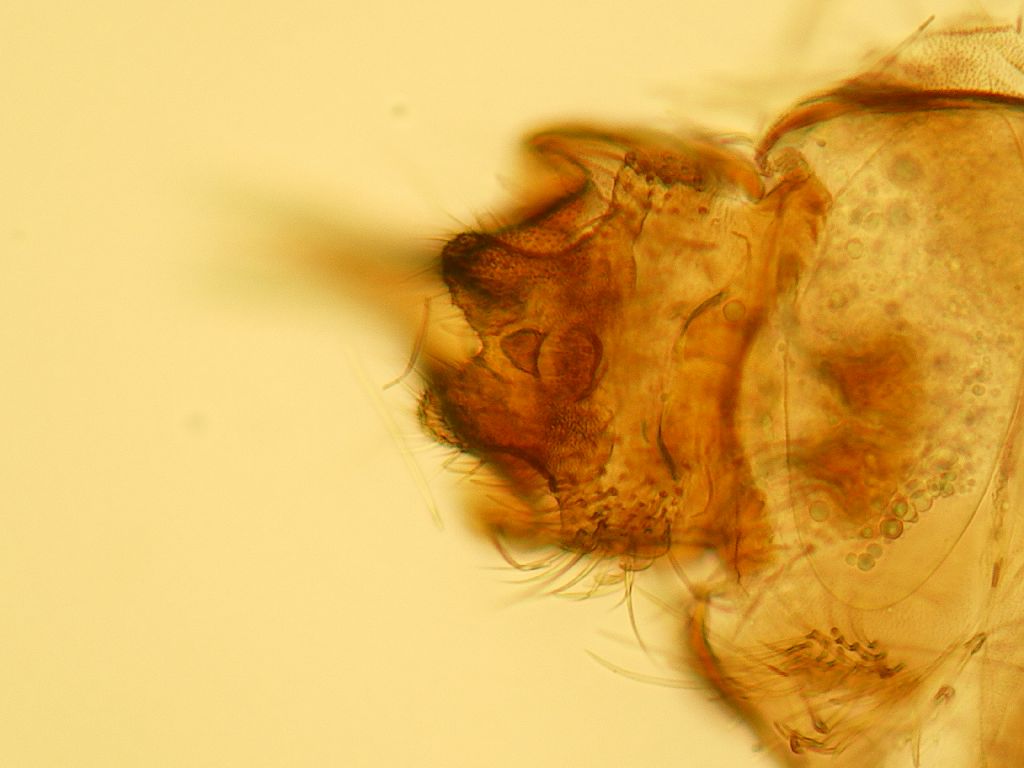
Edited by Louis Boumans on 09-12-2010 23:07 |
|
|
|
| Gunnar M Kvifte |
Posted on 10-12-2010 12:57
|
|
Member Location: Kassel, Germany Posts: 436 Joined: 18.08.09 |
We seem to agree on the species delimitations, while disagreeing in the names. The lectotype specimen of P. albipennis Zetterstedt, 1850 has the antennal tip and subgenital plate of your P. parthenogenetica (Svensson 2009). The situation is complicated by many authors using P. albipennis for P. satchelli Quate, 1955 and/or P. zetterstedti (Jezek, 1983) - however this is not based on good zoological practice. Ideally, the type specimens should be given prevalence. As far as I know, Jan Jezek and Bo W. Svensson are the only specialists that actually have examined the type (found in Lund, Sweden). The type material of P. severini and P. parthenogenetica is probably lost according to Jezek (1983). Your (and Wagner's) albipennis is either satchelli or zetterstedti. Characters separating P. satchelli Quate, 1955 and P. zetterstedti (Jezek, 1983) include the presence/abscence of spines on the swelling between segments 13 and 14, the shape of the aedeagal bridge and the direction of the ?paramere (a structure I can point out to you on a picture, but not name at present). As only satchelli occurs in Norway, however, I have not tested this on actual specimens. Jan Jezek seems to be the only author to regularly collect P. zetterstedti. If you want, I can mail you copies of most of the relevant papers (if you don't have them already, that is). I would very much like to collaborate on this! How is the PhD going? Edited by Gunnar M Kvifte on 10-12-2010 13:00 |
|
|
|
| Louis Boumans |
Posted on 10-12-2010 15:39
|
|
Member Location: NO Oslo Posts: 269 Joined: 09.06.04 |
Hi Gunnar, tusen takk, I feel I'm getting closer now! Would be great to get this thing finally sorted out! So your and Svensson's albipennis shouldn't have any males; If I understand correctly, this is also Jezek's position? I learn fro Svensson that it was Jezek who made the preparation of the albipennis lectotype. So I assume it was also Jezek who designated this lectotype as such? (The 'albipennis' drawings in Tonnoir 1922 would than probably depict satchelli or zetterstedti.) Remains the status of zetterstedti. This name got on the Dutch species list after Jezek's identification of some malaise trap material from the Netherlands, so both satchelli and zetterstedti occur in this country (if they are to be distinguished). Perhaps you can have a look at my Dutch 'albipennis' pictures on my website and see if you can discern two types here? Are the characteristics visible on this pic for instance? 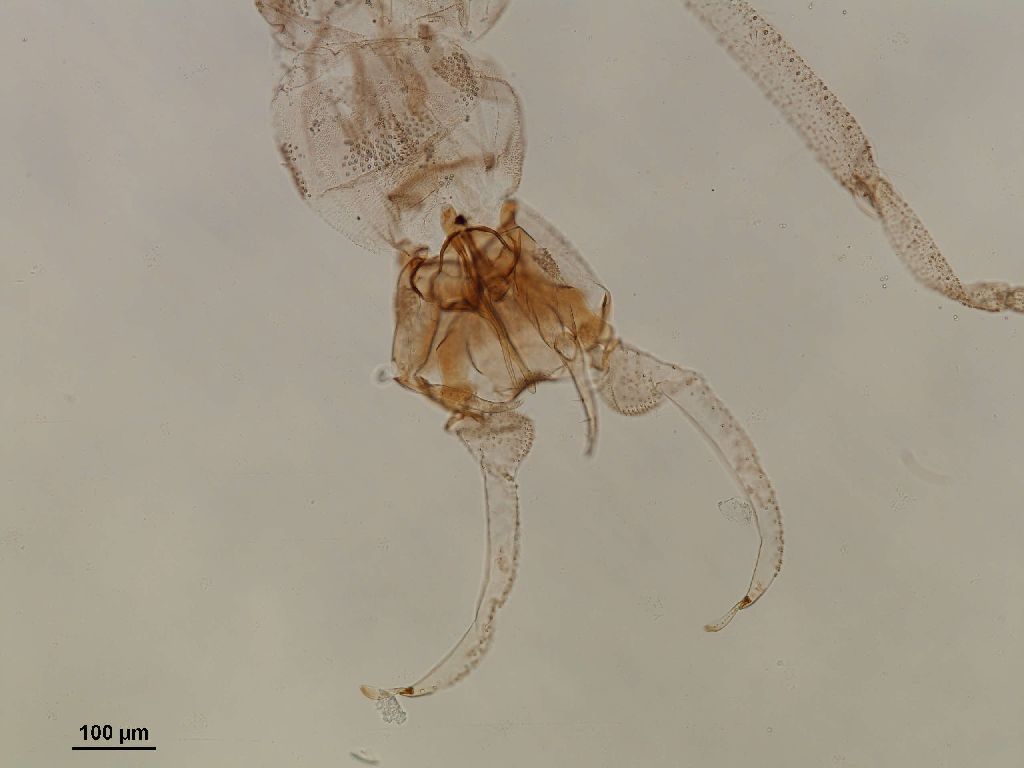 some more of lower quality here: http://psychodida...hp?album=2 I am actually lacking the description of zetterstedti, so great if you could mail me a copy of that! Louis |
|
|
|
| Louis Boumans |
Posted on 13-12-2010 21:29
|
|
Member Location: NO Oslo Posts: 269 Joined: 09.06.04 |
In Oslo I found this female, where the swelling before the last antennal segment is arguably present, but not as clear in the normal 'satchelli'. I must check other specimens later this week, to see if they vary in this respect, and if I cand find males too.
Louis Boumans attached the following image: 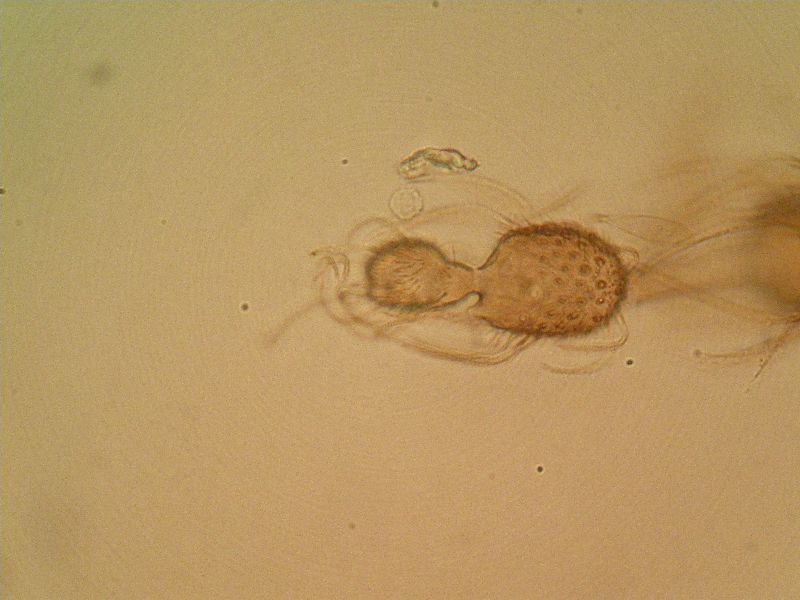 [108.41Kb] Edited by Louis Boumans on 13-12-2010 21:33 |
|
|
|
| Louis Boumans |
Posted on 13-12-2010 21:30
|
|
Member Location: NO Oslo Posts: 269 Joined: 09.06.04 |
and the subgenital plate of the former Oslo specimen..
Louis Boumans attached the following image: 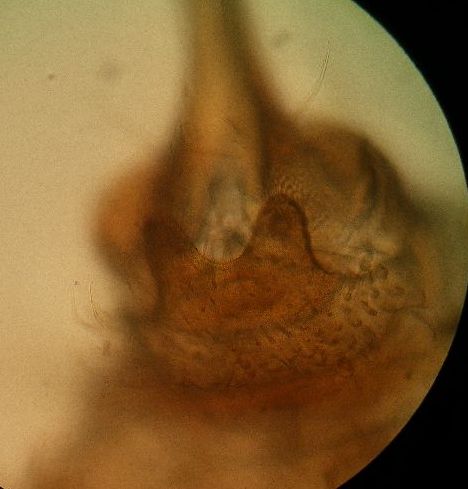 [83.04Kb] Edited by Louis Boumans on 13-12-2010 21:37 |
|
|
|
| Louis Boumans |
Posted on 13-12-2010 21:38
|
|
Member Location: NO Oslo Posts: 269 Joined: 09.06.04 |
For comparison, here's the antenna with the normal size swelling, in a Dutch specimen, male: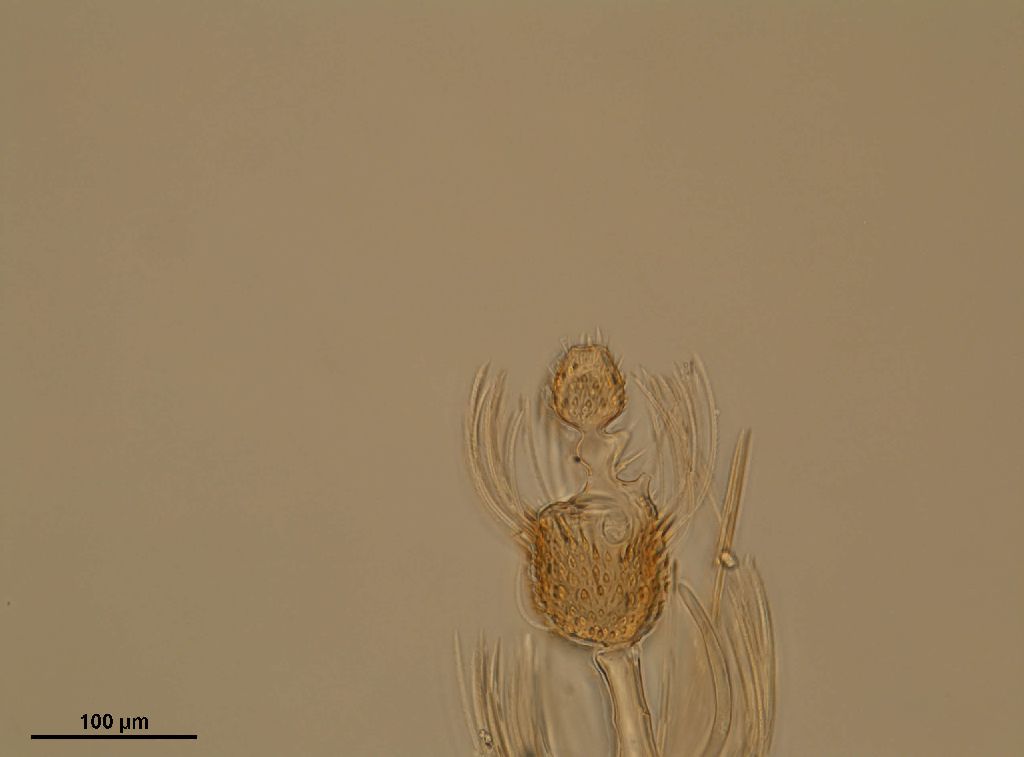 |
|
|
|
| Gunnar M Kvifte |
Posted on 14-12-2010 20:07
|
|
Member Location: Kassel, Germany Posts: 436 Joined: 18.08.09 |
Jezek's albipennis male is not reliably associated - his 1983 albipennis description is based on a single male and 7000 females; Withers (1988) assumed the male to be an undescribed species and named it Psychoda jezeki. I am not familiar with Tonnoir's severini male, but it might represent a male form of albipennis, or a senior synonym of P. jezeki. As for the swelling in the antennal tip; I have seen variations similar to those on your picture there. I have always assumed that this has been caused by variations in the slide mounts rather than in the morphology - antennae are 3-dimensional structures that appear differently from different angles. If they are mounted in different angles they will look different as well. |
|
|
|
| Louis Boumans |
Posted on 27-12-2010 01:43
|
|
Member Location: NO Oslo Posts: 269 Joined: 09.06.04 |
Gunnar M Kvifte wrote: Jezek's albipennis male is not reliably associated - his 1983 albipennis description is based on a single male and 7000 females; Withers (1988) assumed the male to be an undescribed species and named it Psychoda jezeki. I am not familiar with Tonnoir's severini male, but it might represent a male form of albipennis, or a senior synonym of P. jezeki. I've found Jezek's 1983 descriptions again, and reread the literature. Tonnoir 1940 also considers severini males to be rare. His drawings match those of Jezek of male albipennis fairly well, except that the shorter one of the two aedeagi end to the left of the longer one in Tonnoir, and to the right in Jezek 1983, in dorsal view. I wonder whether there is a mechanism by which (triploid) parthenogenetic individuals can occasionally develop into males. (This is claimed for the triploid woodlouse Trichoniscus pusillus pusillus.) But I agree that presumed males of albipennis (aka severini) could just as well belong to a different species. Gunnar M Kvifte wrote: As for the swelling in the antennal tip; I have seen variations similar to those on your picture there. I have always assumed that this has been caused by variations in the slide mounts rather than in the morphology - antennae are 3-dimensional structures that appear differently from different angles. If they are mounted in different angles they will look different as well. You're probably right about this. I'll try to check this more carefully in the future. Tonnoir 1940 says the difference between no swelling and slight swelling is between the parthenogenetic and the sexual form of severini, but this seems incorrect. In my new house they all have the slight swelling, but so far no males. Edited by Louis Boumans on 27-12-2010 01:56 |
|
|
|
| Louis Boumans |
Posted on 27-12-2010 14:46
|
|
Member Location: NO Oslo Posts: 269 Joined: 09.06.04 |
Next question is whether Ps satchelli is different from zetterstedti MALE Quate 1955:216 “the dististyle of the former [= albipennis, i.e. Jezek’s 1983 zetterstedti ] is long, thin, and slightly hooked at the tip”. Jezek 1983 takes this as describing the difference between satchelli and zeterstedti: “dorsal pair of phallomeres of the last quoted species [albipennis auct., zetterstedti Jezek 1983] without conspicuous hooked end, in contrast to the former species [satchelli, with conspicuously hooked end]. ” (Jezek 1983:229) Jezek goes on stating that the loaned paratype of satchelli he saw had on the contrary less conspicuously hooked phallomeres than zetterstedti. Same text in Jezek 1990. (The term “dorsal pair of phallomeres” is not used in any of the figures, but I assume Quate and Jezek refer to the same structure (dististyles), although I sometypes suspect that the distisyles are Jzek's harpagones. In that case 'phallomere'possibly refers to the aedeagus ~penis. Varying terminology can even more confusing than the overuse of “former” and “latter”. ) Is there any clear diagnostic character left to distinguish satchelli and zetterstedti males? Quate 1955:214 fig. 70C shows a triangular plate on top of the aedeagus which is not shown in Jezek’s (1983) fig. 47 of zetterstedti, nor in Jezek’s (1990) fig. 171 of satchelli. The best is to compare Jezek’s own figures of the two species. We see some small differences but it’s not clear if these are meant to be species-specific characters, or rather differences in focus. In fact, the largest difference seems to be between Quates and Jezek’s figures of satcheli, rather than between the two species in Jezek’s descriptions. Next step is to read Jezek’s descriptions more closely: apart from the morphometric differences, which are difficult to assess, and wing venation characteristics, for which we lack a drawing of the zetterstedti wing, the main difference is in that antenna segm 13 and the subsequent swelling are with spines in satchelli, without in zetterstedti. Index of facet diameter to frons is 1.3 in satchelli and 3.0 in zetterstedti. That is a large difference. If 'index' means 'ratio', it would mean that the distance between the eyes is 1/3 the diameter of a facet in satchelli? FEMALES Quate (1955:216): “the subgenital plate of this species [i.e. severini, i.e. zetterstedti] is entirely different from P. satchelli”. Likewise, Jezek (1983:229) is confident that Salamanna 1975a figures a zetterstedti female rather than a satchelli. Thus they agree on the species’ being clearly different, but both fail to point out how to distinguish one from the other. According to J's descriptions, the medial 'sensory organ' is longer than wide in satchelli, ans slightly wider than long in zetterstedti. Edited by Louis Boumans on 27-12-2010 17:49 |
|
|
|
| Gunnar M Kvifte |
Posted on 31-12-2010 12:22
|
|
Member Location: Kassel, Germany Posts: 436 Joined: 18.08.09 |
Harpagones = Dististyles, gonostyles Phallomeres = Parts of the aedagus. If I remember my reprint collection correctly, the hooked phallomere is more clear in lateral view than in dorsal. The attached figure, from the zetterstedti description, points out where I understand it to be in dorsal view. Unfortunately I do not have access to the description right now. Index = Probably ratio, cf. Vaillant 1971-1983. I will look into this character further next week as I get access to my reprints again. Gunnar M Kvifte attached the following image: 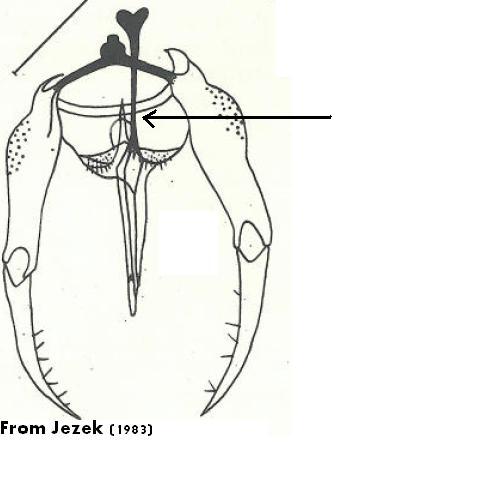 [20.17Kb] |
|
|
|
| Louis Boumans |
Posted on 31-12-2010 16:30
|
|
Member Location: NO Oslo Posts: 269 Joined: 09.06.04 |
Thanks, Gunnar. Yes I generally understand the terms as you do, but as Quate 1955 comments on the dististyli being hooked, and Jezek referring to this publication talks about the 'dorsal pair of phallomeres' there may be a confusion somewhere. As far as I understand there is a single paired aedeagus, not sth like a dorsal and a ventral pair. I suspect Jezek really meant to say ' dorsal pair of genital appendages, i.e. dististyli'. |
|
|
|
| Gunnar M Kvifte |
Posted on 07-01-2011 21:09
|
|
Member Location: Kassel, Germany Posts: 436 Joined: 18.08.09 |
Gunnar M Kvifte wrote: The type material of P. severini and P. parthenogenetica is probably lost according to Jezek (1983). I recently became aware that the natural history museum of Vienna lists a lectotype male of P. severini in their type catalogue. |
|
|
|
| Louis Boumans |
Posted on 09-01-2011 00:51
|
|
Member Location: NO Oslo Posts: 269 Joined: 09.06.04 |
That could be the one Toinnoir 1922:81 mentions, i.e. from Freistadt. Tonnoir 1940:54 lists Ps severini severini from Belgium, Austria, Germany and Algeria, so perhaps the sexual form is common in central and southern Europe, and we should look at some samples from there. I see... I assume that Ps severini is the same as albipennis sensu Jezek, as J also writes. Then, assuming that Northern Europe only has the parthenogenetic form, Zetterstedt's albipennis males from Oslo (Töien) that have gone lost may have been the later satchelli Quate, and Z's females from Skalstugan were the same as severini pathenogenetica. |
|
|
|
| Jump to Forum: |












